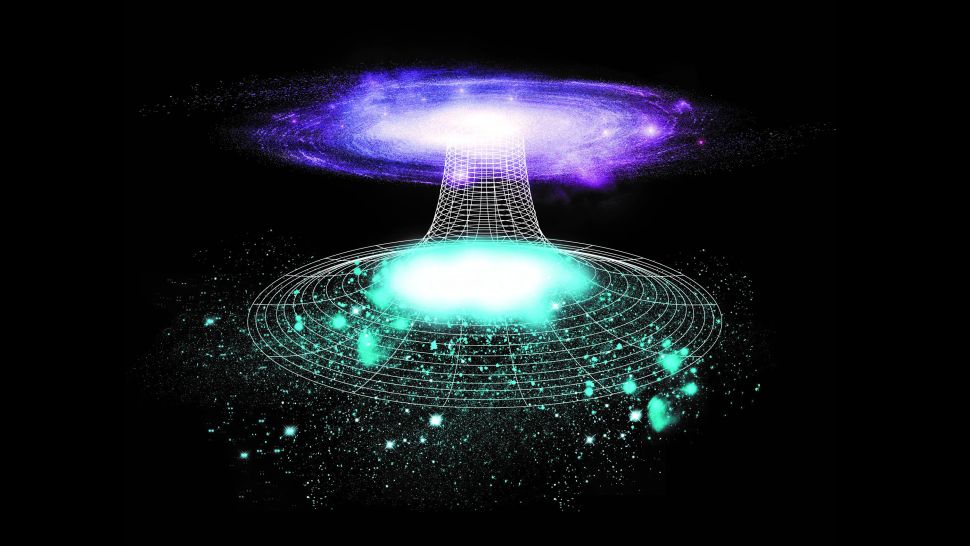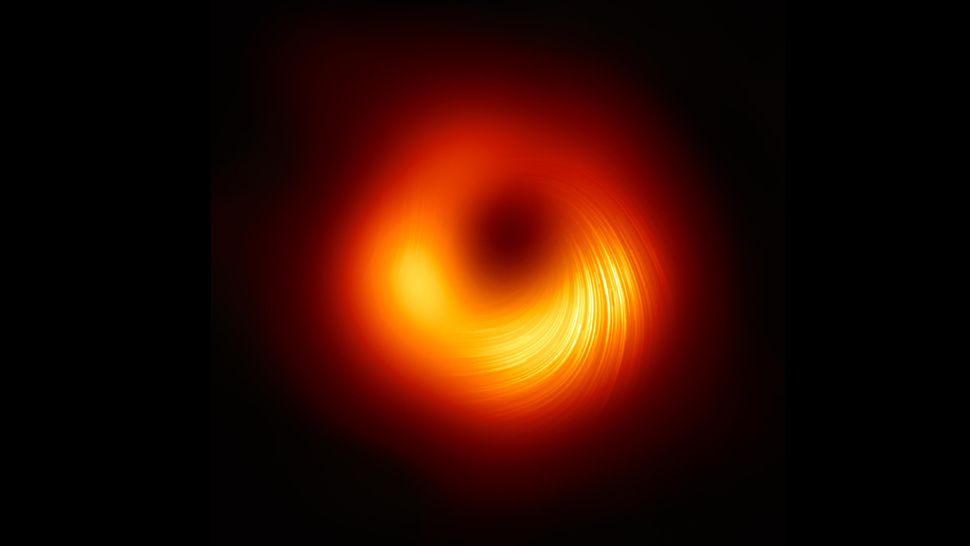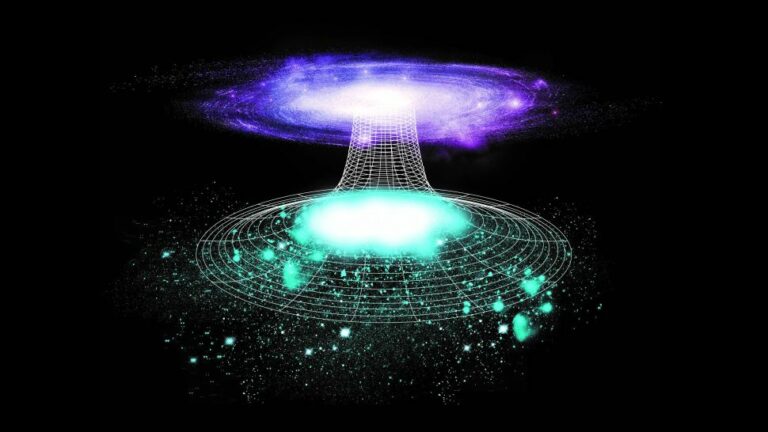White holes: What we know about black holes’ neglected twins
White holes are returning to the experimental spotlight
Theoretical cosmic areas known as “white holes” operate in opposition to black holes. Nothing can enter a white hole, just as nothing can leave a black hole.
Long believed to be a creation of general relativity, white holes were descended from the same equations as their black hole cousins, collapsing stars. However, some theorists have lately questioned whether these two spacetime vortices may actually be one and the same thing.

A white hole seems to a spacecraft crew that is viewing it from a distance just like a black hole. It has weight. It may spin. The event horizon, or bubble boundary separating the item from the rest of the cosmos, may attract a ring of dust and gas. But if they persisted in their observation, the crew may see something that a black hole could never do: a belch. Carlo Rovelli, a theoretical physicist at the Centre de Physique Théorique in France, said: “You can only declare, ‘oh, this is a white hole’ in the moment when things come out.
Similar to how a bouncing ball is the time-reverse of a falling ball, physicists define a white hole as a black hole’s “time reversal,” or a film of a black hole played backwards. The event horizon of a white hole is the most exclusive club in space-time, unlike the event horizon of a black hole, which is a sphere of no return. The region’s edge will never be reached by any spacecraft.
The inside of a white hole is shut off from the history of the universe since nothing can enter, hence no outside event will ever have an impact there. However, objects inside a white hole can depart and interact with the outside world. Professor emeritus at the University of Washington and a pioneer in the study of black holes, James Bardeen, remarked that having a singularity in the past that can have an impact on everything in the outer world is “something more unsettling.”
The theoretical twin
Physics was blasted by Einstein’s field equations like a tsunami in 1915, and researchers are still picking through the debris. His theories not only explained the physics of gravity but also delivered a paradigm-shifting insight into the nature of reality. Space and time are more than just a static background; they flex and fold with the mass of the planets and stars. This realization triggered a competition to determine the maximum amount of abuse that space could withstand from the stuff that floats through it.
Within a year, scientist and astronomer Karl Schwarzschild calculated the space-time curves around a single mass to find the first accurate solution to Einstein’s equations. His response included the beginnings of what physicists now refer to as a singularity, which is a spherical mass that has been compressed to an impossibly dense point, entangling space so tightly that it pinches off from the rest of the cosmos. It creates a no-man’s-land when the causal chain is broken by the event horizon.
The most well-known singularities are black holes, which are areas of space that are so distorted that are no escapes. The horizon of a black hole can be affected by the outside universe, but it cannot be affected by the inside.
Martin David Kruskal, a mathematician, expanded Schwarzchild’s description of black holes in 1960 to encompass all domains of space and time. Although he wasn’t aware of its significance at the time, his new image featured a reflection of the black hole singularity. Later, when black holes became commonplace, a suitable word for their theoretical twins appeared.
It took 40 years to grasp black holes, and only recently have people begun to pay attention to white holes, according to Rovelli.

Why white holes may not exist
White holes are theoretically described by general relativity, but their formation is unknown. When a star disintegrates into a tiny volume, a black hole encloses that portion of space, however watching this movie backwards is illogical from a purely physical standpoint. An event horizon bursting into a functioning star would resemble an egg that had been scrambled by itself, defying the statistical law that states the cosmos should become messier with time.
Even if huge white holes did develop, they would probably disappear quickly. Any emitted matter would crash with the orbiting matter, causing the system to disintegrate into a black hole. Hal Haggard, a theoretical physicist at Bard College in New York, asserted, “A long-lived white hole, I think, is highly implausible.”
Why white holes might exist
For a long, white holes appeared to have the same destiny as wormholes: theoretically possible space-time distortions that were probably impossible in practice. But in recent years, some physicists have revived white holes in an effort to prevent the untimely demise of their darker siblings.
Black holes have been the subject of intense dispute among physicists since since Stephen Hawking discovered that they emit energy in the 1970s. Many people wonder what happens to the internal record of everything a black hole devoured if it disappears. Both quantum mechanics and general relativity preclude the information’s erasure.
“A black hole dies in what way? We are unsure. A white hole’s birthplace: Perhaps a black hole dies and becomes a white hole “explained Rovelli. The two problems fit together neatly, but moving from one to the other requires violating the general relativity equations.
Rovelli is credited with creating quantum loop gravity, an unsuccessful effort to transcend general relativity by explaining space as being constructed from tiny particles in the manner of Legos. He and others propose a scenario where a black hole shrinks to the point that it ceases to abide by the conventional laws of stars and pool balls using the tools from this framework. The black hole could change into a white hole at the particle level when quantum randomness takes hold.
The ultimate white hole
On the other hand, a white hole’s aftermath may be present everywhere. The Big Bang’s burst of matter and energy appears to black hole scientists to be possible white hole activity. Haggard observed that “the geometry is extremely similar in the two scenarios.” Even to the extent of at times being mathematically identical.
Cosmologists refer to this image as “the Big Bounce,” and some are looking for distinctive white hole structures in the universe’s first light that can be seen. Rovelli also questions if violent radio bursts are the cries of hypothetical small black holes that are on the verge of becoming white holes (although this explanation appears increasingly unlikely).
Haggard believes that physicists should go all the way down this rabbit hole even if the cosmos might not bend into all the forms that general relativity enables. Why wouldn’t you look into whether or not they have intriguing effects, he said. Although the effects might not be what you had anticipated, it would be reckless to disregard them.
Additional resources
Discover more interesting facts about white holes with this article by Fraser Cain on Universe Today. See how white holes emerge from the same space-time diagrams as black holes in PBS’s space-time video. Explore the parallels between a white hole and the Big Bang in this article from Nautilus.
Bibliography
- Bardeen, James M. “Models for the nonsingular transition of an evaporating black hole into a white hole.(opens in new tab)” arXiv preprint arXiv:1811.06683 (2018).
- Bianchi, Eugenio, et al. “White holes as remnants: a surprising scenario for the end of a black hole.(opens in new tab)” Classical and Quantum Gravity 35.22 (2018): 225003.
- Cowen, Ron. “Quantum bounce could make black holes explode.(opens in new tab)” Nature News doi 10 (2014).
- Kedem, Yaron, Emil J. Bergholtz, and Frank Wilczek. “Black and white holes at material junctions(opens in new tab).” Physical Review Research 2.4 (2020): 043285.
- Nikitin, Igor. “Stability of white holes revisited.(opens in new tab)” arXiv preprint arXiv:1811.03368 (2018).
Bardeen, James M. “Black holes to white holes I. A complete quasi-classical model(opens in new tab).” arXiv preprint arXiv:2006.16804 (2020).
Do not forget to share your opinion with us to provide you with the best posts !




0 Comments